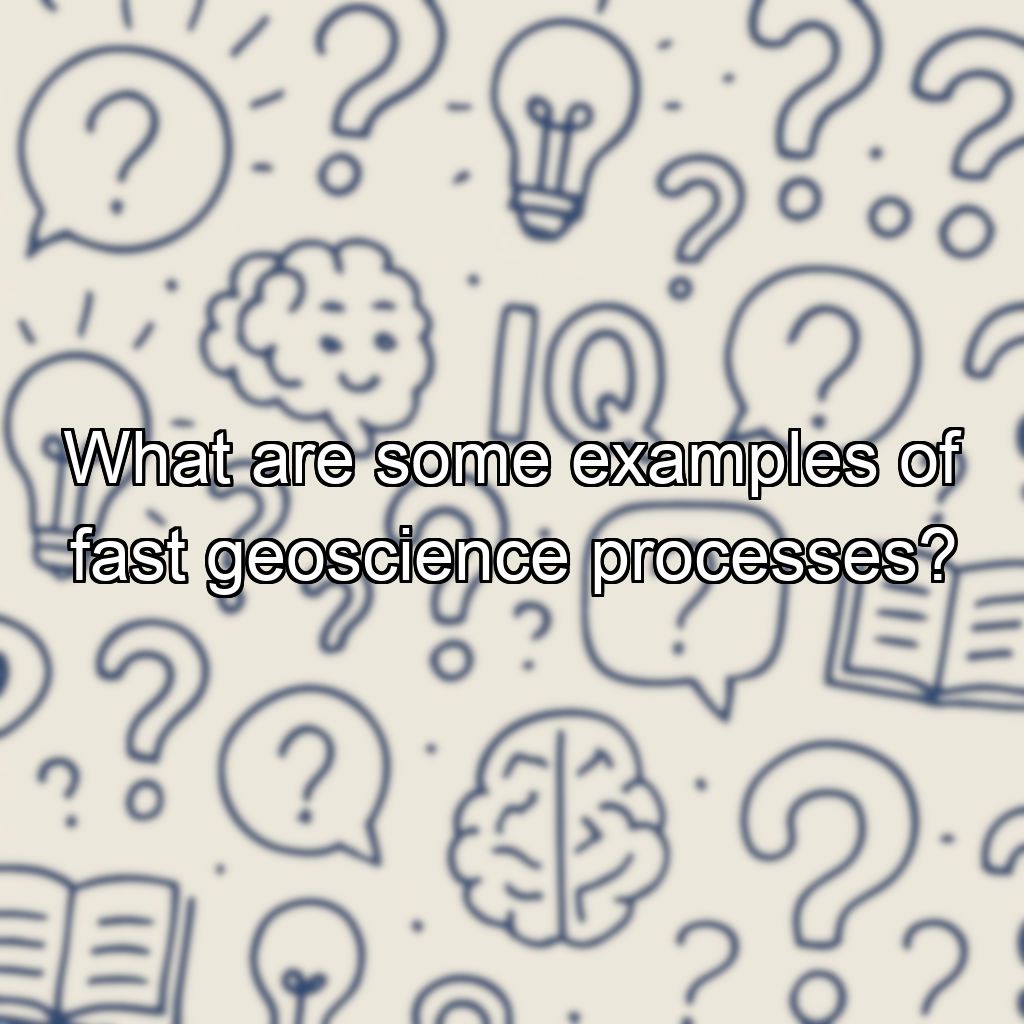What are some examples of fast geoscience processes?

Examples of Fast Geoscience Processes
Geoscience processes operate at a wide range of timescales. While many occur over millions of years, some happen very quickly—within seconds, minutes, or days. Here are some notable examples of fast geoscience processes:
- Earthquakes: Sudden releases of energy along faults cause the ground to shake, occurring within seconds to minutes.
- Volcanic Eruptions: Explosive eruptions or lava flows can begin with little warning and unfold over minutes to days.
- Landslides: Mass movements of rock, soil, or debris down slopes can happen in seconds to minutes, often triggered by rain, earthquakes, or volcanic activity.
- Tsunamis: Large sea waves generated by underwater earthquakes, landslides, or volcanic eruptions propagate rapidly and can flood coastlines within minutes to hours.
- Flash Floods: Intense rainfall or dam failures can cause rivers and streams to rise rapidly, flooding areas within minutes to hours.
- Avalanches: Rapid downslope movement of snow and ice, often occurring in seconds or minutes, especially in mountainous regions.
- Slope Failures: Quick collapses of cliffs or embankments, sometimes in response to human activities or natural weakening.
These processes can have significant impacts on landscapes and human societies due to their speed and unpredictability.